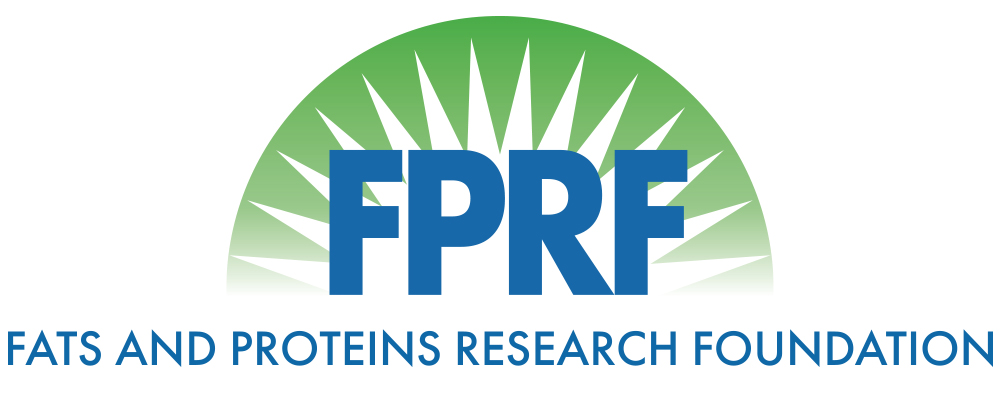Production of Omega-3 Fatty Acid-Rich Algae from Animal Protein Hydrolysate
Title: Production of Omega-3 Fatty Acid-Rich Algae from Animal Protein Hydrolysate
Principle Investigator: Zhiyou Wen
Year: 2006
Objective: Included below.
Lay Summary/Industry Summary: The rendering industry desires new commercial outlets for its protein meal products. The overall goal of this project was to utilize hydrolysates of rendered protein as less expensive substrates for the production of high-value omega-3 fatty acids in algal culture.
Demand for omega-3 fatty acids is increasing as evidence of their beneficial effects in preventing cardiovascular diseases, cancers, schizophrenia, and Alzheimer’s mounts. The traditional source of these fatty acids, wild caught fish, cannot sustainably keep up with this growing demand. Development of a mass algal culture process for producing omega-3 fatty acids may be a very attractive alternative, if it can be done inexpensively. Traditional mass algal culture is limited by the high cost of feedstocks such as yeast extract and peptone. The hypothesis investigated in this research was that hydrolysates of rendered protein can serve as a much less expensive substitute feedstocks.
b. Objectives of original proposal and the specific goals of the original project
We proposed four objectives in the original proposal: The objectives include: (1) production of a range of hydrolysates that vary in terms of hydrolysis method, degree of hydrolysis, and raw material source; (2) analysis of these hydrolysates in terms of properties hypothesized to affect algal performance; (3) investigation of algal growth and omega-3 fatty acid production by using protein hydrolysate as a source of nitrogen and micronutrients; and (4) characterization of the algal biomass produced.
c.Results achieved toward each objective of the project:
In Objective 1, we used both alkali- and enzyme-based methods to hydrolyze different animal proteins including meat and bone meal (MBM), blood meal (BM) and feather meal (FM) to create a variety of hydrolysates. The enzymes used in the enzymatic hydrolysis were Alcalase, Flavourzyme, and Versazyme. The distribution of masses of the soluble peptides decreased as the hydrolysis reaction progressed. The average masses of the peptides in the hydrolysate were larger than those present in commercial Bacto Yeast Extract (BYE), but within the range of sizes found in other commercial complex substrate such as Bacto Typtone. Most experimental hydrolysates had greater crude protein content than yeast extract. Little fat or ash from rendered protein ends up in the hydrolysate, but both alkali and enzymatic hydrolysis agents contribute significantly to the ash content of the hydrolysate.
In Objective 2, the amino acid content of the different hydrolysate samples were analyzed. All batches of hydrolysate differed in their amino acid composition from the raw rendered protein, with alkali-hydrolyzed samples having greater difference. In all alkaline batches, the relative concentrations of arginine, serine, and threonine decreased progressively with increasing reaction time. Alkali treatment of protein also resulted in the formation of some unusual cross-linked amino acids including lysinoalanine and lanthionine. In the enzyme hydrolyzed batches, all alkali- and Versazyme-hydrolyzed samples had an increased concentration of proline, hydroxyproline, glycine, and hydroxylysine suggesting a preferential hydrolysis of collagen; Alcalase- and Flavourzyme-hydrolyzed samples were not altered in this manner.
In Objective 3, animal protein hydrolysates prepared under Objective 1 were used for growing algae which can produce high levels of omega-3 fatty acids. We chose two algal species, Schizochytrium limacinum as a DHA producer and Pythium irregular as an EPA producer. Both the alkali- and enzyme-hydrolysates were tested for supporting the growth and omega-3 fatty acids production of S. limacinum and P. irregulare.
The protein hydrolysate resulted in a better growth performance for P. irregular than S. limacinum. P. irregular had an excellent growth performance when growing on enzyme-based hydrolysate. Among three protein sources (MBM, FM, and BM), MBM and FM supported a better growth performance than BM. Using MBM and FM as a substrate, the EPA content and production yield of P. irregular achieved 15mg/g dry biomass, and 80 mg/L, respectively.
In Objective 4, the algal biomass obtained from enzyme-based hydrolysate was characterized. The biomass contains approximately 15% lipid, 36% protein, and 40% carbohydrate, with 9% ash. In addition to EPA (C20:5, n3), the algae also contain palmitic acid (C16:0), palmitoleic acid (C16:1), oleic acid (C18:1), linoleic acid (C18:2) and arachidonic acid (C20:4) as major fatty acids. For the amino acid composition, the algae contain all essential amino acids. We further performed a through elemental analysis to identify the potential heavy metal contamination of the algal biomass, if any. No heavy metals such as mercury were found, indicating the algal biomass is suitable for use as food grade products.
d.Perspective
In summary, we produced both alkali- and enzyme-hydrolysates and characterized these samples. Then, we used the different hydrolysates to test their capabilities of supporting DHA production by S. limacinum and EPA production by P. irregulare. The results show that it is feasible to use enzyme-hydrolysates for the culture of P. irregulare to produce EPA. The protein hydrolysate has a great advantage in term of its cost compared with the substrate commonly used by industry (e.g. yeast extract). The algal biomass obtained from animal protein hydrolysate has a “high quality” in terms of its fatty acid composition, amino acid composition, and freedom from heavy metal contamination. In order to fully realize the potential benefits of omega-3 fatty acid production from animal protein sources, future work is needed to thoroughly optimize culture conditions and develop high cell density culture techniques.
